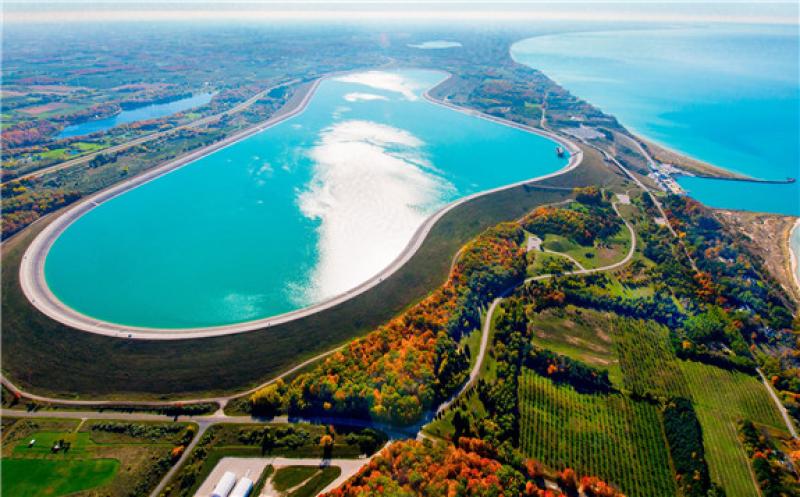The U.S. Department of Energy has released a new report as part of its HydroWIRES initiative: A Comparison of the Environmental Effects of Open-Loop and Closed-Loop Pumped Storage Hydropower.

This report examines available information (literature and Federal Energy Regulatory Commission licenses) to provide a relative comparison of the potential impacts to aquatic and terrestrial resources from different types of pumped storage hydro (PSH). The report compares the potential environmental effects of constructing and operating open-loop and closed-loop PSH projects; describes how effects are avoided, minimized or mitigated at existing and proposed projects in the U.S. and other countries; and discusses the relative significance of the environmental issues.
The environmental effects of closed-loop PSH projects are generally lower – both more localized and of shorter duration – than those of open-loop PSH projects. This is because closed-loop PSH projects are located “off-stream,” potentially minimizing aquatic and terrestrial impacts, and often have greater siting flexibility than open-loop PSH projects.
However, certain specific impacts of closed-loop systems can be higher than those of open-loop systems, particularly for geology and soils and groundwater. This can be due to, for example, the need to construct two above-ground reservoirs rather than one, or the impact of groundwater withdrawal or circulation.
There is one type of open-loop project where impacts may be as low, if not lower, than closed-loop PSH: open-loop projects where the lower reservoir was already constructed for other purposes and an upper reservoir was added for PSH operations at a later date. Such “add-on” PSH projects comprise 12 of the 43 PSH projects in the U.S. It is likely that initial construction impacts will be lower than those of constructing a closed-loop project, as only one new reservoir needs to be built. On the other hand, operational impacts are still likely to be higher than for a closed-loop project because the add-on project’s lower reservoir is still continuously connected to, and may affect, the naturally flowing water feature that was dammed for its construction.
This report does not imply that PSH projects have environmental effects that cannot be mitigated. In addition, many PSH projects under development have unique characteristics, such as being built in a pre-existing mine or quarry or otherwise taking advantage of existing infrastructure.
With increased interest in closed-loop PSH development, project developers, regulators, resource agencies, and other stakeholders should understand the environmental effects of closed-loop systems (as well as measures to avoid, minimize, and mitigate effects) and include them in the environmental review of any proposed project.
HydroWIRES: Water Innovation for a Resilient Electricity System is focused on understanding and supporting the changing role of hydropower in the evolving electricity system in the U.S. Through the initiative, DOE’s Water Power Technologies Office (WPTO) seeks to understand and drive utilization of the full potential of hydropower resources to help reduce system-wide costs and contribute to electricity system reliability and resilience.
This report was authored by Pacific Northwest National Laboratory, operated by Battelle and supported by the HydroWIRES Initiative of the WPTO, under award or contract number DE-AC05-76RL01830.